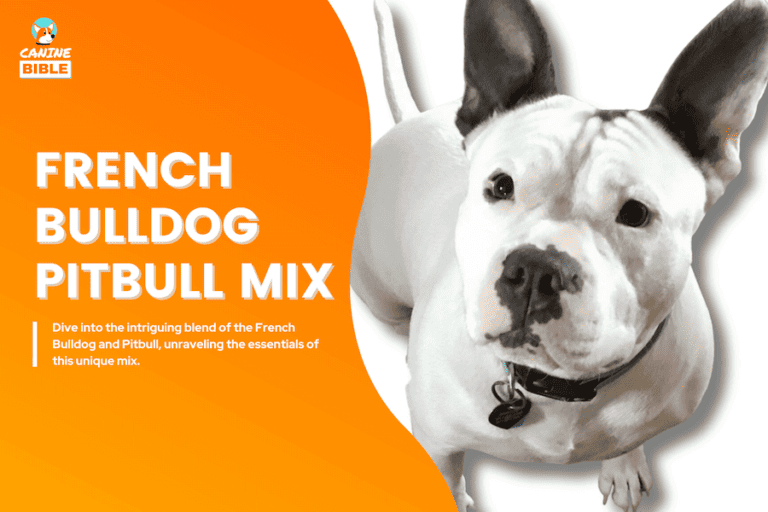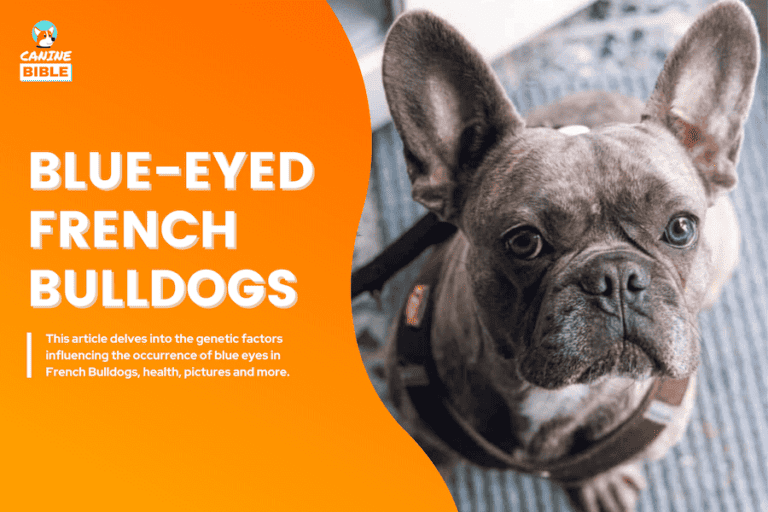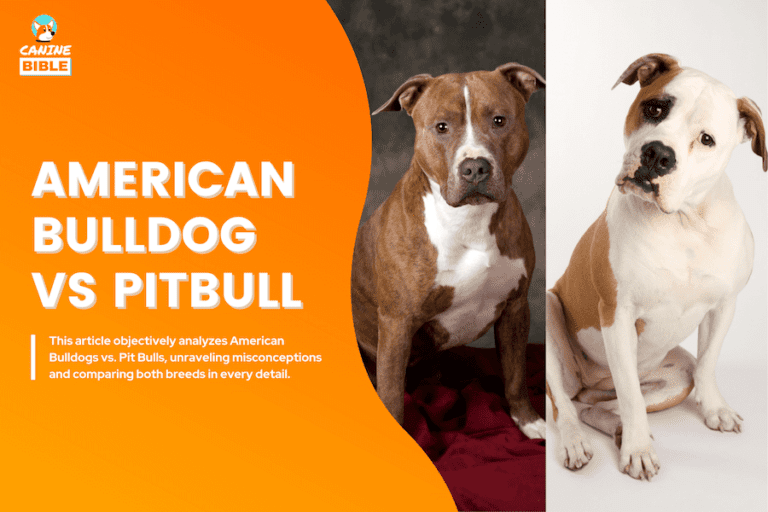Runt of The Litter: Meaning, Pros & Cons, Personality, Development – Are Runt Puppies Bad & Stay Small?
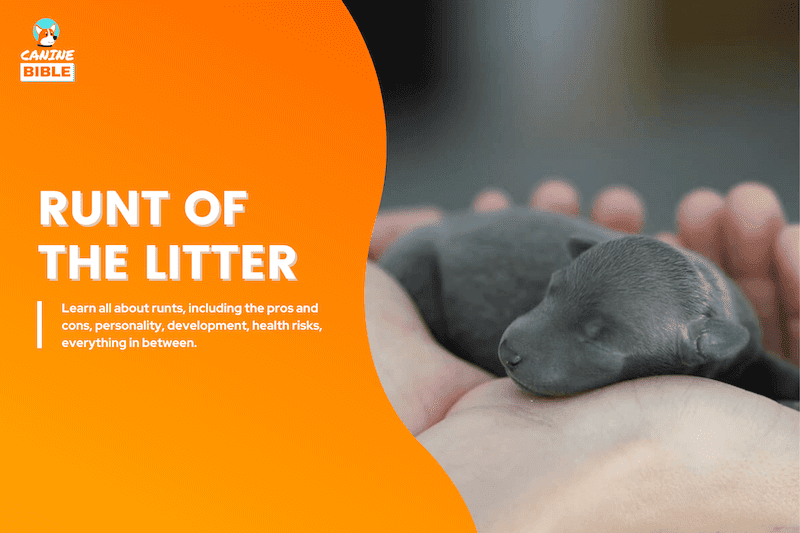
Canine Bible is reader-supported. We receive affiliate commissions via some of our links. This doesn’t affect rankings. Learn more.
This runt of the litter puppy guide will teach you everything there is to know about runt dogs. Parenting a runt puppy is no walk in the park. The term runt puppy is often coined for the weakest and smallest pup of the litter. So, should you pick the runt of the litter? Will a runt puppy grow to normal size? Are there any health risks associated with runt dogs? Can they survive and thrive as well as other puppies? We’ve researched and answered every possible question and concern about runt of the littler puppies. Let’s dive right in!
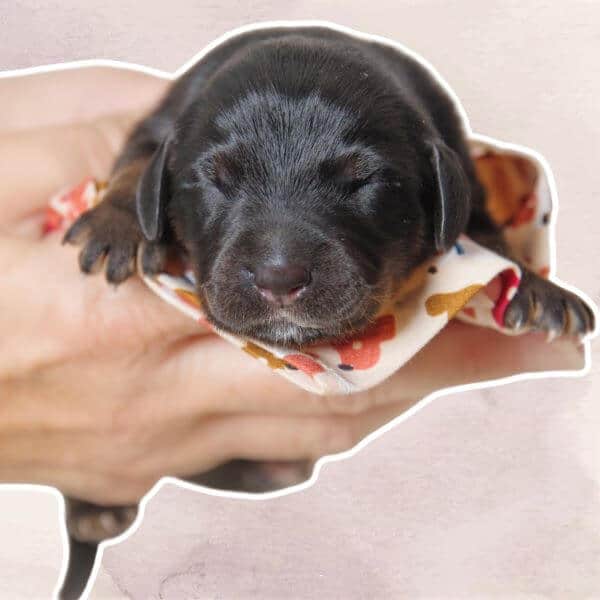
What Is The Runt of The Litter?
The “runt of the litter” refers to the smallest and often weakest pup. A runt puppy tends to be weaker and has the lowest chances of survival.
In her book “The Dog Breeder’s Guide to Successful Breeding and Health Management,” Dr. Margaret V. Root Kustritz, a respected board-certified veterinarian theriogenologist, attributes runt dogs to “poor placentation.” This means that the placenta cannot supply adequate oxygen and nutrients to the runt from the mother’s bloodstream. This placenta malfunction consequently hinders the runts’ growth and chances of thriving.
Another way to understand why runt puppies happen is natural selection (survival of the fittest). Litters compete for milk and privileged spots near the dam, especially in crowded litters. Puppies with this advantage early on become the strongest and grow faster than their littermates. Conversely, runts are usually the last to eat, resulting in inadequate nutrition and growth.
Runt of The Litter Meaning
What does runt of the litter mean?
The term “runt” doesn’t have a precise meaning and is more of a colloquial term. Categorizing a puppy as a runt usually means the pup is the smallest of the litter and may exhibit signs of poor health and weakness. Currently, there are no set parameters that define a puppy as a runt. The term seems to be used loosely and is subject to personal interpretation.
Myra Savant-Harris, in her book ‘Canine Reproduction and Whelping: A Dog Breeder’s Guide,’ states that runts are not premature puppies; instead, they are simply puppies who had a ‘poor implantation site in the uterus.’ Similarly, large puppies are not overdue puppies but pups with a great implantation site.
Runt of The Litter Personality
Like any other dog, runt dogs’ personalities are strongly linked to human personality. There is no outlying evidence that the runt of the litter will be predisposed to develop a specific personality.
According to a study published in the National Center for Biotechnology Information, personality consistency in dogs is an important aspect of human-dog relationships. You can expect runt puppies to have the most common personality traits of their breeds, but the owner will shape the overall personality development of your pup and its changes over time.
However, there are some perceived personality traits associated with runts:
Resilience
Due to their initial size and health disadvantages, runts may develop a resilient nature. They might have to work harder to compete with their siblings for food and attention, which can lead to a more determined or tenacious personality.
Submissive
In some cases, runts may exhibit more submissive personalities within the dynamics of their littermates. This could result from being smaller and less dominant in the early stages of development.
Independence
Sometimes, runts may become more independent, learning to fend for themselves early.
Affectionate and Sociable
Some runts, especially those that receive extra care and attention from humans, may develop affectionate and sociable personalities. They might become more bonded to humans due to this additional interaction.
Intelligence and Resourcefulness
There is an anecdotal belief that runts, having to navigate their initial disadvantages, may develop a keen intelligence and resourcefulness.
Researching your runt’s dog breed personality traits is probably a good indicator of what kind of personality your runt will have. Research suggests that, just like humans, when dogs go through significant life changes, their personality traits change. Therefore, while runts may sometimes display these traits, each animal is unique, and their personality will develop based on a multitude of factors beyond just their size at birth.
Runt of The Litter Appearance
Regarding physical characteristics, a runt of the litter puppy typically has a smaller body frame than its siblings, or it may appear below the average size or weight for its breed and age. Another common physical attribute of runts is their fragile bodies and weak bone structure.
Newborn runt puppies may also exhibit weak suckle reflexes when a fingertip is gently placed in their mouths. Poor muscle tonality is another characteristic. It’s important to talk to your veterinarian about the appropriate weight gains to expect for your dog’s breed and to monitor all puppies for signs of malnourishment.

Runt of The Litter Puppy Health Risks
It can be tough being a runt puppy. There are several runt dog health issues associated with runt puppies. Here is a list of the most common run health problems.
Runt of The Litter Pros And Cons
Pros
Cons
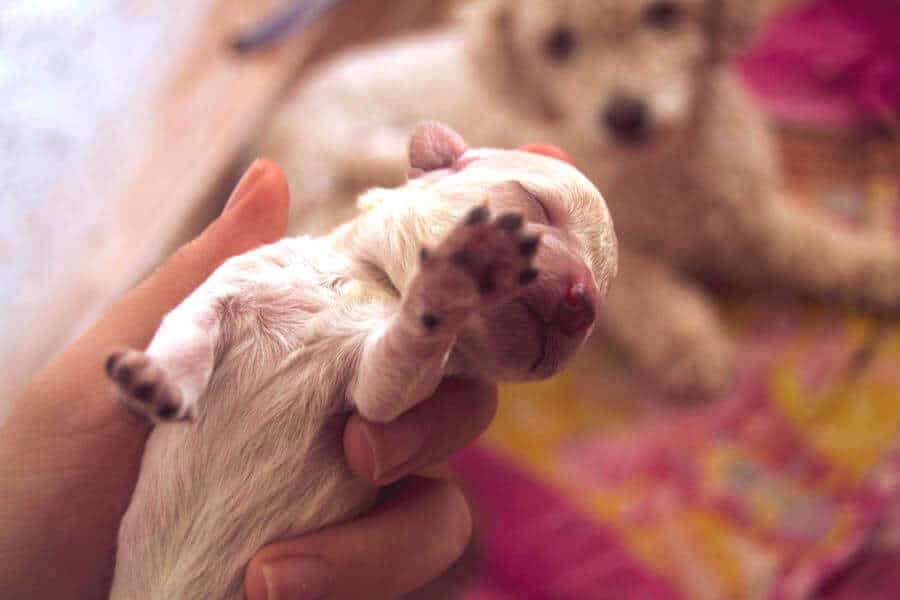
Is It Bad To Get The Runt of The Litter?
Getting a runt puppy can be harmful only if the runt’s health is severely compromised. Also, if you are new to puppy parenting, a runt puppy may not be your best choice, as some may require special care. Runt can live just as well as any other puppy, provided they are looked after.
If the runt of the litter is in good health, you shouldn’t have to worry about the cons of raising a runt dog.Runt Puppy Development
Does a runt puppy develop normally?
Several factors can cause stunted development in runts, from intestinal worm infections to malnourishment or genetics. While most runts can grow normally, some may fail to develop quickly due to congenital defects such as macroglossia, which involves incomplete or abnormal tongue development. Puppies who receive too much or too little calcium during their formative stages may develop abnormal bone growth rates. Poor placentation can lead to low birth weight in newborn puppies, resulting in several problems, including poor development.
According to WebMD, the most common reason a puppy’s growth becomes stunted is infection with hookworms or roundworms. Most puppies are born with worms, so deworming them is crucial. Worms can consume enough calories from the puppy to slow their growth and hinder proper development.
If you discover that your puppies are infected with worms, consider using Safe-Guard Canine Dewormer. It’s effective against most types of worms that affect dogs. If you are concerned about the development of your runt dog, the Kennel Club in the UK divides the puppy development process into ten stages. You can follow these stages to track if your runt pup is developing normally.
Do Runts Stay Small?
Whether runts stay small can vary widely depending on several factors, including their breed, underlying health issues, genetics and nutrition. Runt puppies don’t always stay small. Runts can and often will grow to match the size of their siblings. However, the runt can remain smaller than the other puppies even when fully grown. Each case is unique, and good care and nutrition can often positively influence a runt’s future size.
Are Runts of The Litter More Aggressive?
The runt of the litter dogs are not predisposed to have a more aggressive temperament or disposition. Aggressive dog behavior is mainly due to external factors such as socialization, nurturing, neglect, or improper training. A year-long survey of dog owners who use confrontational or aversive methods to train aggressive pets found that these dogs will continue to be aggressive unless training techniques are modified.

Will The Dam Reject The Runt of The Litter?
Yes, a mother dog can reject the runt of the litter and turn on her runt. This rejection may hasten its death.
How do you know when dog mothers reject the runt? The most common signs to look out for are:
If the dam ignores or rejects a runt puppy, human intervention is necessary to help the runt of the litter survive.
Most dog moms abandon their runts. Watch this special mama taking care of her runt puppy.
How to Pick a Runt Puppy
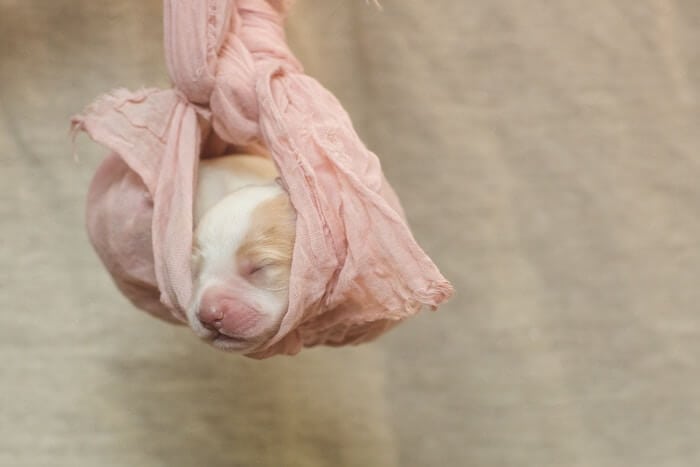
How To Care For A Runt of The Litter: Step by Step
The first few weeks of a runt’s life is when it needs you the most. This step-by-step guide shows you how to care for a runt puppy so your little furry friend can thrive and live a healthy life.
How To Fatten Up A Runt Puppy?
Runt puppy not gaining weight? Runt puppies often have weak glands, and some may lack the energy to feed as frequently or struggle to latch on to suckle. In such cases, you must manually position the puppy near the dam’s mammary glands to facilitate easier nursing. If this approach is ineffective, consider supplementing with extra food while the puppy is still nursing.
If the runt is too young for dog food, you’ll need to obtain a special formula prescribed by your veterinarian and bottle-feed him as an additional source of nutrition. Once the puppy is old enough for dog food, introduce it, but feed the runt separately to prevent stronger puppies from stealing the food. Another option is to purchase a high-calorie nutritional gel designed for animals recovering from illness or surgery. This gel can also benefit pregnant animals and puppies struggling to get nutrients and calories.
Do not prevent the runt from drinking the mother’s milk whenever possible. Monitoring the puppy’s weight daily is essential to ensure it gains weight. For the best course of action, always consult your veterinarian for advice.
Keeping The Runt In a Separate Whelp Box For Safety
Keeping the runt in a separate whelping box might not always seem ideal, but it can be a necessary precaution. Newborn runts are often fragile, with weak bones, and a separate whelping box can help eliminate the risk of the runt being accidentally crushed by the dam or other puppies. Runts are also more prone to parasites and infectious diseases. Therefore, separating them from the litter might be wise to prevent a possible outbreak.
When selecting a runt of the litter puppy, it’s advisable to avoid puppies from a dam’s first litter. Ideally, you should choose a puppy from the dam’s third litter with the same sire. This increases the likelihood that the dam has previously conceived healthy pups with the same father, indicating a proven track record of healthy litters.
Breeding Runt of The Litter
You might think runts are unsuitable for breeding, but this assumption is often misplaced. A runt deemed perfectly healthy by a veterinarian and has passed standard health examinations can indeed have its puppies. The same applies to a pairing of two runts.
It’s important to remember that although runts may have a slow start, they often catch up and grow like normal dogs once properly nursed and weaned. However, a runt that does not grow to a standard and healthy size should be treated accordingly. Breeding unhealthy runts is considered unethical and should be avoided.
Is A Runt Puppy Cheaper?
Given the risks associated with runt dogs, some dog breeders might offer the runt at a lower price. While runts can be slower to develop than their littermates, a healthy runt may still be sold at the same price as the other puppies by the breeder. Many runts catch up quickly and grow the same size as their siblings, sometimes even larger. However, beware of unethical breeders. Some may attempt to market runts as ‘teacup’ or ‘micro’ puppies and charge higher-than-normal prices, exploiting the runt’s smaller size for profit.
Frequently Asked Questions
Should I Pick the Runt of the Litter?
Is picking the smallest pup, the runt, a bad choice? The answer is both yes and no. If you are considering getting a runt, it’s crucial to know the pup’s health status and observe its behavior when interacting with its dam and littermates.
Picking a runt puppy is acceptable if the puppy is the smallest in the litter but otherwise healthy. However, choosing an abnormally small runt that shows signs of infections or presents congenital deformities at birth is risky. These conditions can be indicators of future health complications. Not every runt puppy will thrive; some may require more care and attention than others. Responsible dog breeders should provide a complete medical history for the runt. Ensure that a veterinarian thoroughly checks the runt for serious health conditions.
Relying solely on your intuition and emotions when selecting a runt is not advisable. Being fully informed about the health status of your prospective puppy is vital for responsible care and ownership.
Like It? Subscribe & Share!
Sources
Canine Bible uses only high-quality sources, including peer-reviewed studies, to support the facts within our articles. Read our editorial process and product review methodology to learn more about how we fact-check, test products, and keep our content accurate, reliable, and trustworthy.
- Kustritz, M. V. R. (2006). The Dog Breeder’s Guide to Successful Breeding and Health Management. Elsevier Health Sciences.
- Fratkin, J. L., Sinn, D. L., Patall, E. A., & Gosling, S. D. (2013). Personality Consistency in Dogs: A Meta-Analysis.
- Michigan State University
- Greer, D. M. (2022). How to detect and manage risk factors in newborn puppies.
- Indrebø, A., Trangerud, C., & Moe, L. (2007). Canine neonatal mortality in four large breeds. Acta Veterinaria Scandinavica, 49(S1).
- Freshman, J. L. (2005, November 1). Causes of fading puppy and kitten syndrome. dvm360.
- Williams, K., & Downing, R. (n.d.). Feeding orphaned puppies. VCA Animal Hospitals.
- DMV360
- PetCoach. (n.d.). Weaning puppies.
Canine Bible authorship represents the unified voice of our entire editorial team and our in-house veterinarians rather than a single author. Each article, blog post, and review published under the Canine Bible name undergoes a rigorous review process, involving all team members to guarantee accuracy and up-to-date in accordance with the latest veterinarian research. This collaborative effort is an integral part of our editorial process and aligns with our four pillars of content creation. This approach ensures our content is backed by expert knowledge and factual information, offering our readers reliable, actionable, and trustworthy content.


![Pomeranian Husky Mix: Pomsky Breed Guide [Price, Pictures, Personality & More]](https://www.caninebible.com/wp-content/uploads/2022/02/Pomeranian-Husky-Mix-768x512.png)
